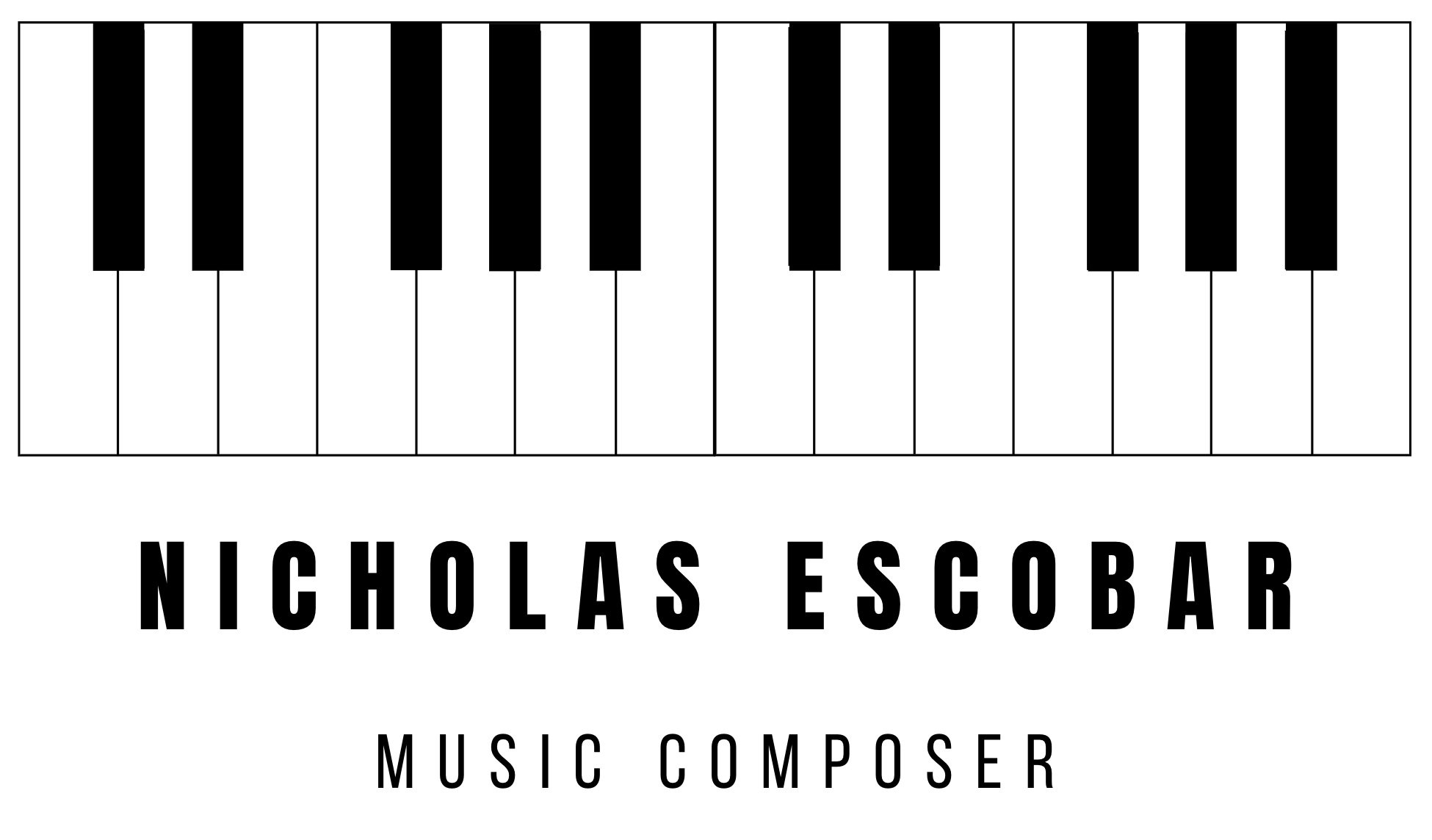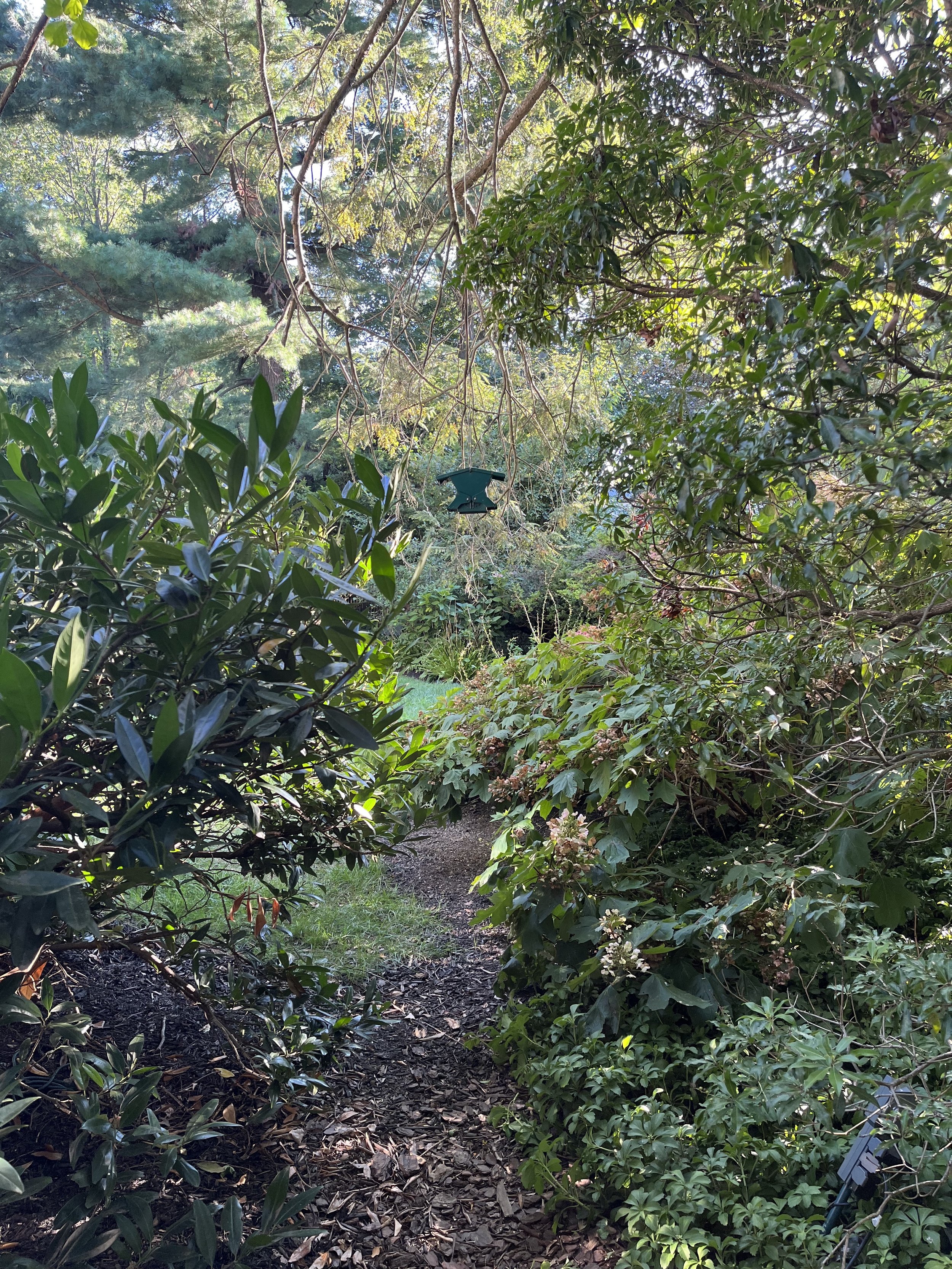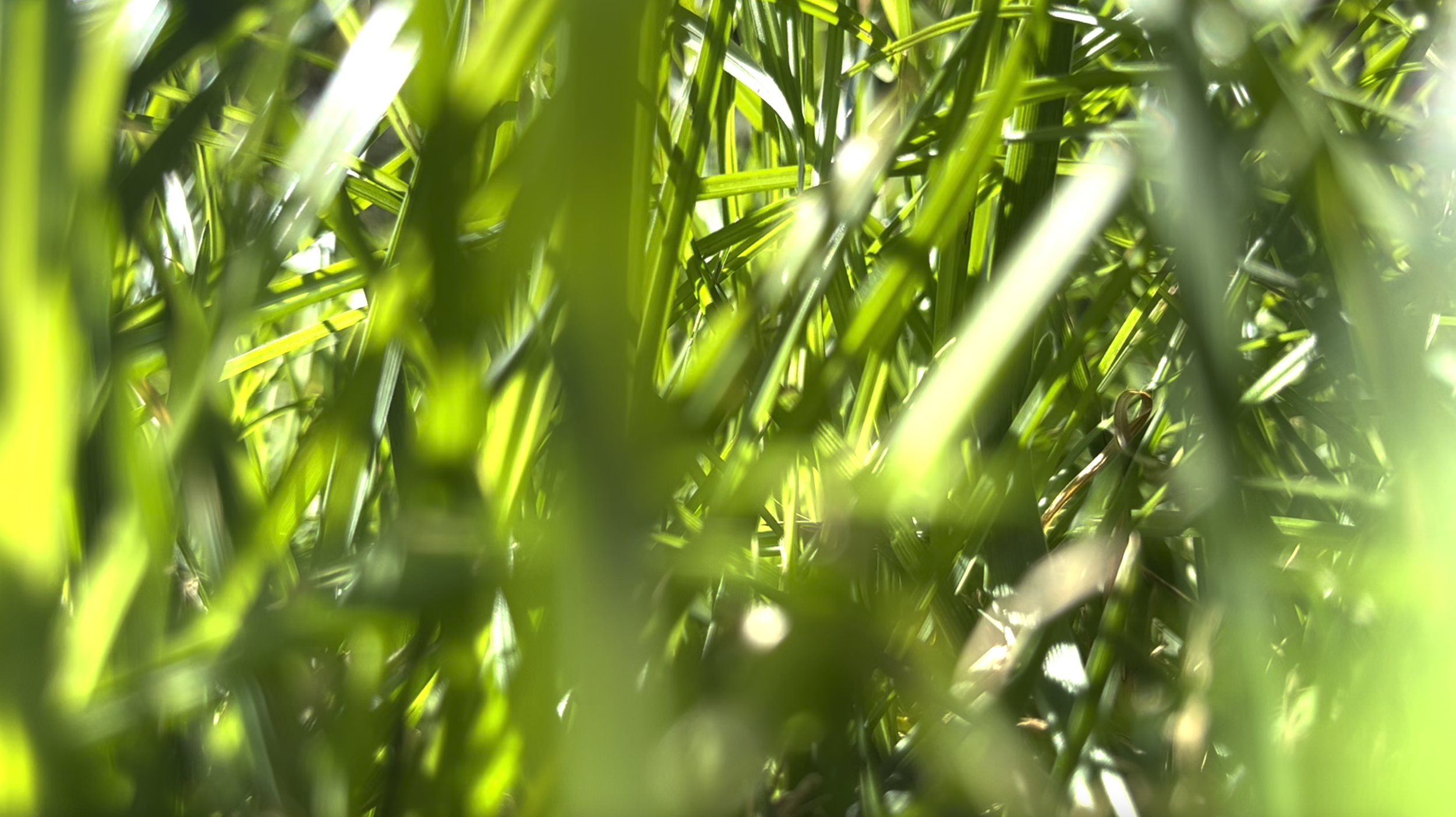My Composing Process: squirrels playing organs (2022)
Dear Readers,
I really enjoyed working on “incoming cars and crickets” and decided to compose a sequel of sorts for it.
Let’s talk about how I composed “squirrels playing organs”.
Recording Squirrels
The bird feeder in question. You can see the oak-leaf hydrangea underneath it. I placed the mic just around there,
The morning of August 17th, I was looking out at our bird-feeder and saw a couple squirrels snacking on the stray seeds on the ground. Earlier this year I got some really good bird calls for “Small Mouth Sounds” from under the feeder, so I decided to put the Zoom H4N mic out there again to see if I could record some squirrels.
I played the microphone underneath the oak leaf hydrangea (which plays a starring roll in the “incoming cars and crickets” film), facing the area where the squirrels snack. I then left the mic there for around 25 minutes. After about 5 minutes, the birds and squirrels returned back to the feeder. Halfway through the recording (right as I was about to stop it) a squirrel became wary of the mic. It kept crouching down and glancing at it. It clearly viewed it as an object of menace. So I kept the mic out there a bit longer. The squirrels snacked on the seeds some more quite near to the microphone.
I stopped the recording, put the SD card in my computer and got to work.
Distorting Squirrel Sounds
I quickly realized that the mic didn’t truly capture the squirrels eating (I guess it’s quite a quiet sound). That being said, in the recording you can hear movement (especially when a squirrel jumps down from the oak leaf hydrangea to the ground ) and a slight bit of crunching on the seeds. Nevertheless, this long-form recording became the centerpiece of “squirrels playing organs”.
I began by creating a duplicate of the file and EQ’ing out every frequency except the low frequencies. I was left with a low growl (mostly from nearby cars and the low end frequencies of our pond pump). I greatly altered this sound by adding a low boost Console EQ, Dirty Chamber Chromaverb reverb, the Phat FX plugin, a Pitch Shift up an octave, a wide Spread across the stereo image and then a control Channel EQ to reel in some of the low end frequencies. The effect is an ever-changing distorted drone and it mapped out the rest of the piece.
Now, with the original squirrel track, I only utilized the high frequencies (mostly crickets and some bird calls) and to this I added an Adaptive Limiter to really boost the gain and then the Step FX plug-in with an aggressive filter cut-off to add a rhythm. The result of this was basically a cricket ride cymbal.
Adding More Soundscapes
While the squirrel recording formed the backbone of the piece, I added further soundscapes to fill out the sonic environment. A recording that I did in Battersea, London of evening traffic became a driving rhythm (by using the Step FX and EQ’ing to only have the middle frequencies). I used a recording of the woods in Poland, Maine that I recorded in 2020 (which features a number of crickets) and added a limiter, EQ’d it just like the Battersea recording and utilized a different Step FX preset. The recording that I did at the Blue Heron Nature Preserve on Kent Island was augmented by the Step FX and heavy reverb, Finally, I added in the bird recordings that I did for “Small Mouth Sounds”. I believe that many of the birds in the recording are House Finches. They span the entire track and frequently cut through the mix. All these soundscapes create a world for the instruments to reside in.
Creating My Orchestra
Now this is where “squirrels playing organs” differs from “incoming cars and crickets”. Instead of using minimalist instrumentation, I decided to create an intense, textured and at times chaotic sound utilizing percussion, keyboards, synths and basses. The entire orchestra began with the “Engine Room” from Spitfire LABS’s new Foghorn instrument. I played a simply eighth note rhythm that became the heartbeat for the rest of the percussion. I built up a driving beat using long half-notes by the Foghorn Nightfrost synth, pizzicato basses (from Spitfire Studio Strings) and spiccato contrabass clarinet (Spitfire Studio Woodwinds). For the basses I added an odd pitch shift down a 3rd to create a cluster-chord of sorts. I did the same thing with the contrabass clarinet but added another pitch-shift down an octave to create a super crunchy chord. Then I added the crème de la crème: contrabass trombones (Spitfire Studio Brass) playing super low in their range, with a pitch shift up a 7th and a pitch shift down a 3rd. The entire driving beat sounds like this:
The orchestra continued to grow. Quick 16th notes by the concert tom drum (European Folk Kit) and a syncopated rhythm by the tapan and bodhran drums (European Folk Kit). The LABS Drumkit arrived in style with a similar syncopated rhythm and 16th notes that double the concert tom. I added a bizarre Step FX preset called Pulsing Gates to create an off-kilter, synthesized feel.
I basically had a canvas with some paint on it but not a full image. I wanted the piece to have an emotional arc, and one of the first things that came to mind was highlight the piano. after the percussion builds up, the piano arrives and that’s when the jazz begins.
A Jazz Trio
The sound of the piece changes drastically a little under 2 minutes in. It sounds synthesized, percussive and dark and brooding. And then suddenly: jazz. The upright bass, playing a bass line that jumps between the key of Cm and F major. The ride cymbal, playing quick eighth and sixteenth notes. The soundscapes become percussive accompaniment. The piano solo is improvised. I wanted a free-flowing, conversational vibe for it.
The organ FINALLY arrives in all its glory. It is the Acid Jazz organ from Air DB-33 virtual organ. The organ solo is accompanied by more of the percussion from the beginning section, really filling out the sound. The piano plays a dialogue solo with the organ (and I pan them on either side of the stereo image for this reason).
For the solos, I didn’t try to clean up the performances in any way. I largely kept them as I played them, because I wanted that spontaneous, real, not-perfect, honest, improvisational feeling.
Filming Grass
For the video to accompany this track, I decided to emulate “incoming cars and crickets”: one long take and just seeing what happens in front of my iPhone camera.
I went out into my yard, got onto the ground and placed my iPhone right up against a clump of especially tall grass. The result was a labyrinthian view. So many layers and levels. I felt like I was looking into a theatrical set. I held the phone there for 4+ minutes, and recorded wind shaking the grass, small bugs crawling around, the sunlight shifting in and out. It was mesmerizing.
It’s funny how things can spontaneously work when you put music to picture. When I placed the video and music into iMovie, it just so happened that when the percussion really kicks in a gust of wind blows the grass sideways. Movie magic.
Conclusions
I feel that every project I work on teaches me something different about music and composing. This piece taught me about the lengths that I can go to distort soundscape recordings and truly make them musical. Crickets became a ride cymbal. Low frequencies rumbles became a distorted drone synth. I can continue to use this technique and push it even further. I also really enjoy these short music pieces/videos centered around soundscape recordings and I plan on doing more of them.
As always, if you have any questions about this piece or about my work in general, feel free to email me at nicholasescobarcomposer@gmail.com.
Your’s Musically,
Nicholas



